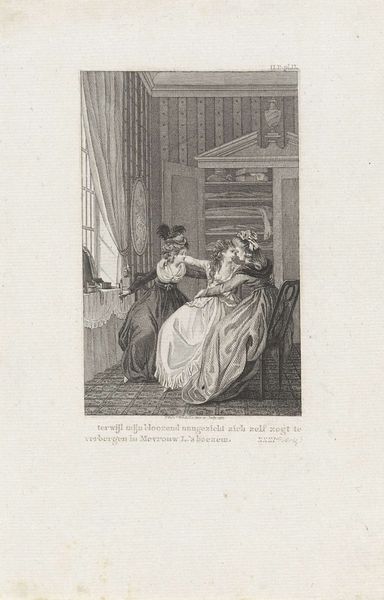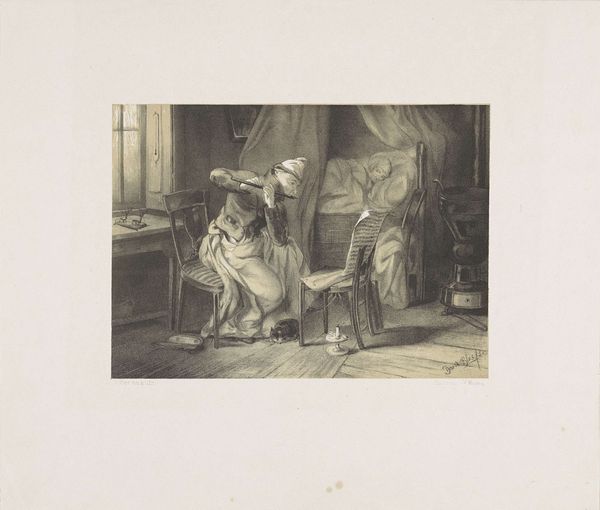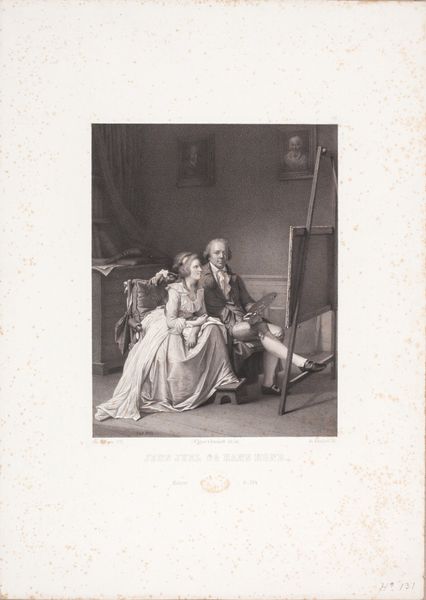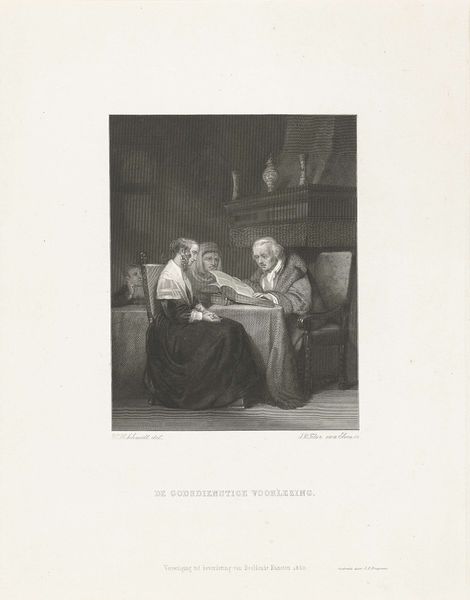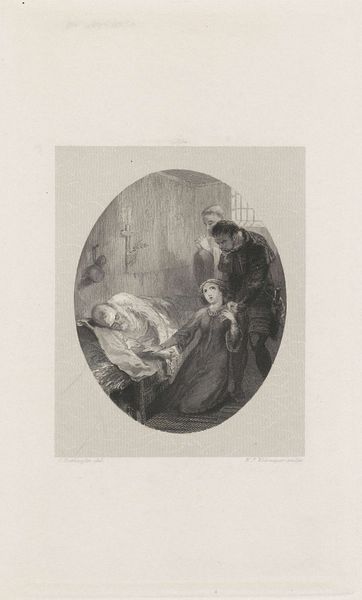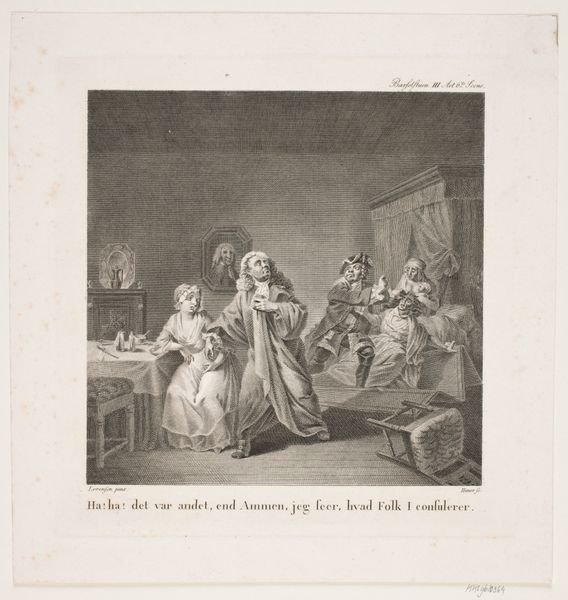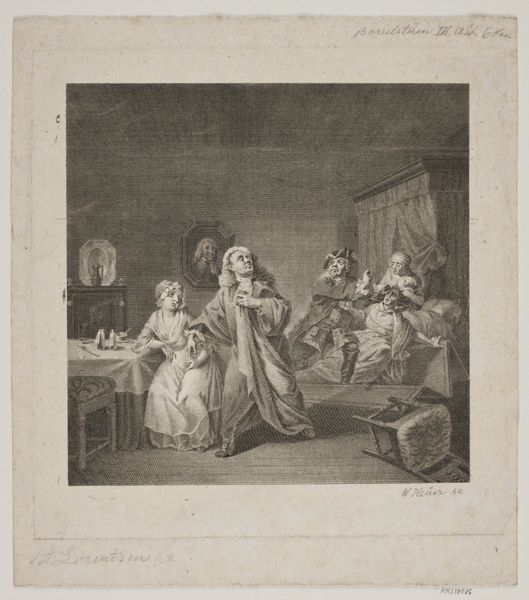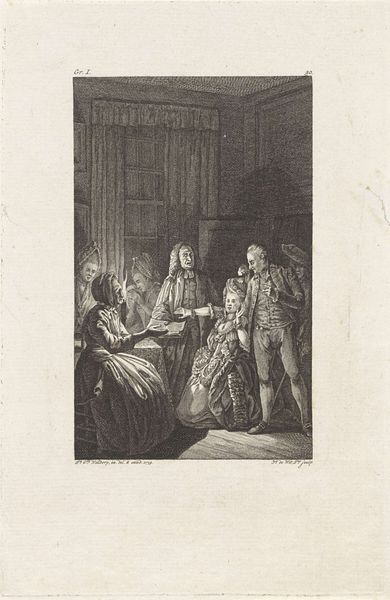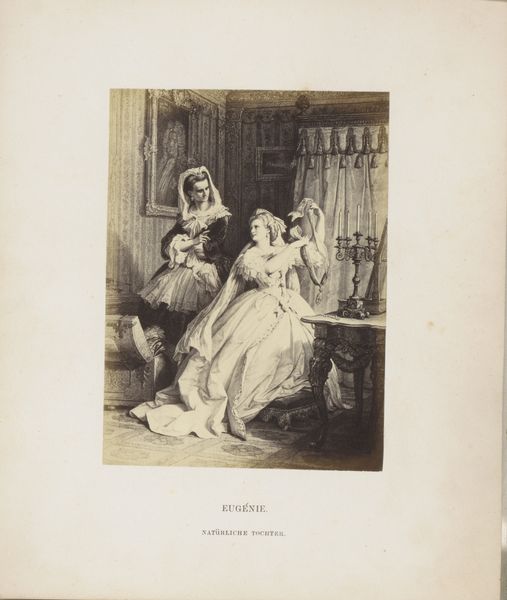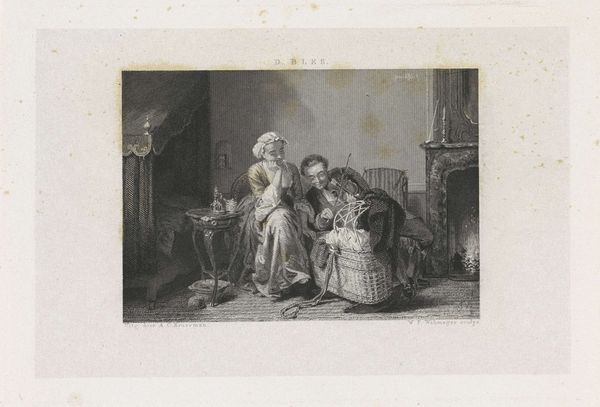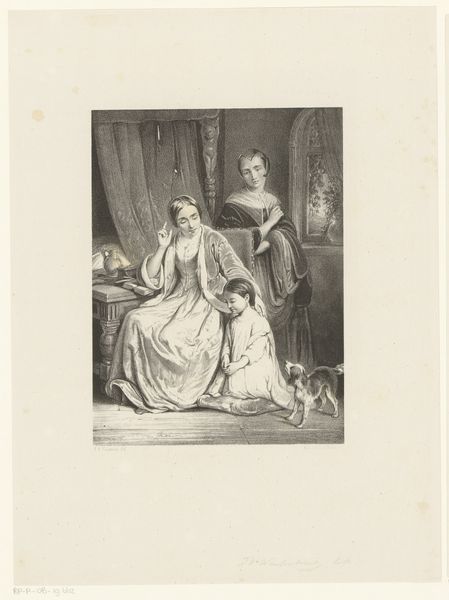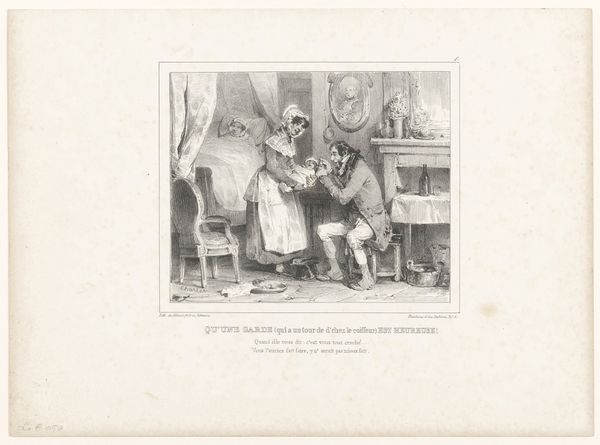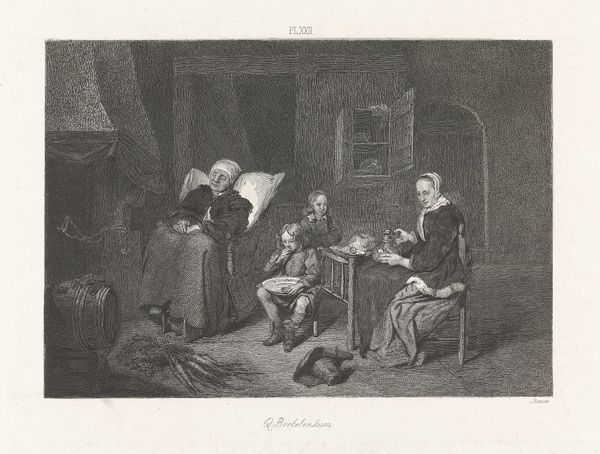
Dimensions: height mm, width mm
Copyright: Rijks Museum: Open Domain
Curator: This is "Waarzegster," or "The Fortune Teller," an 1857 engraving by Johann Wilhelm Kaiser, currently held at the Rijksmuseum. Editor: There’s an air of clandestine mystery to it. The muted tones of the print emphasize the close proximity of the figures, and make the viewer feel as though they're invading on a private, slightly unsettling encounter. Curator: Yes, it encapsulates that mid-19th-century fascination with both realism and romanticism. The artist masterfully uses engraving to convey light and shadow, creating a genre scene filled with intrigue and a touch of superstition. The act of fortune-telling is rich with symbolic weight, touching upon ideas of fate, desire, and the unknown. What do you think of how this resonates? Editor: Well, I am intrigued by the printmaking process itself. Kaiser was renowned for his skills in engraving. Look at the intricate detail he was able to achieve on that table cloth! It's almost textile like. You really get a sense of the labor involved, translating that detail from the original painting into the matrix, probably a metal plate, and the number of prints he would've had to pull. And for what end? Did this create greater access to images of bourgeois leisure, of which fortunetelling could have been one facet? Curator: Definitely. Consider, too, the attire and posture of each woman, each conveys status, role, and perhaps a subtle hint of inner life. It captures a specific social dynamic between them and projects those visual clues that have come to be culturally understood with this common practice of fortune-telling. Editor: I see that. I suppose I'm thinking more about how this kind of image circulated, reached its audience through the print medium and was consumed. Was it destined for private collections, public displays, illustrations? Where was it finally, literally embodied? Curator: These prints acted almost as democratic distribution of knowledge and art, allowing people of various backgrounds to contemplate their fates through visual representation, or to access and study artworks, now, by an artist known to us. The fortune teller as archetype and visual form touches so many hearts with similar anxieties throughout time. Editor: A final thought - it does offer a snapshot into the material conditions of the 19th century—a look at labor, production, and distribution. But that symbolic weight you were talking about definitely imbues the entire print. Curator: And the enduring nature of symbolic meaning ensures that the "Waarzegster" can still captivate us today.
Comments
No comments
Be the first to comment and join the conversation on the ultimate creative platform.
